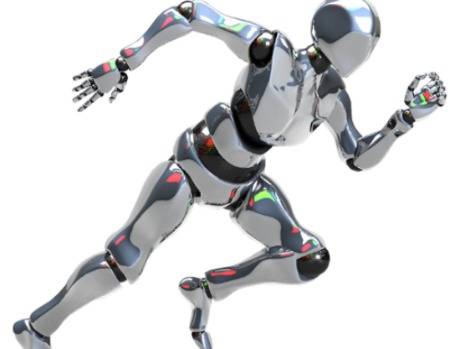Major (but Solvable) AI Challenges Get an Assist from ACR Tools

Radiologists’ primary job is to extract information from medical images and combine that with our own knowledge base and information about a patient and population to describe accurately the meaning of the data and aid in making decisions about the patient’s condition.
Today, almost all of this data is digital, and thus accessible to computers as well as us humans.
Harnessing the Power of Data Propels Us Forward
Digital data has made significant progress in radiology practice possible. First, digital cross-sectional imaging such as CT, US, and MR appeared. Next PACS disrupted traditional radiology practice. And today, we are discovering how AI can provide tools to make statistically based predictions and decisions—incorporating more data than is even theoretically possible for humans to do alone.
This new paradigm of humans plus machines—extracting ever more information, knowledge, and wisdom from data—offers staggering new opportunities for radiology. As captivating and valuable as this future seems, the gulf is wide between what is theoretically possible and where we are today.
AI-enabled radiology requires a robust AI environment that works accurately and reliably to help make decisions that often have high consequences. Radiology practices, industry, academic researchers, organizations, and others all are contributing to build, piece by piece, the tools to bring this to fruition.
ACR Is Building New Tools to Underpin Clinical Radiology AI-Enabled Practice
At the ACR Imaging Informatics Summit, I was enthused and encouraged by the meaningful progress the ACR Data Science Institute is making on many of the foundational building blocks radiologists need to make robust radiology AI real.
Every radiologist should see the presentation by Po-Han (Howard) Chen, MD, MBA, chair of the ACR Imaging Informatics Advisory Council. His talk succinctly describes new tools the ACR is building, which potentially will underpin all clinical radiology AI-enabled practice. As a bonus, ACR has radiologists in mind when building the tools, and they are doing a good job making them comprehensible to radiologists.
The ACR tools that Howard describes in his talk include:
• ACR Cortex™, an interactive and collaborative online education platform
• Marval and ACR Assist™, which help to provide structured clinical data and reports necessary to standardize clinical data
• ACRdart™, which standardizes and discovers data for research and clinical study operations
• ACR AI-LAB™, a tool to help radiologists understand and build clinical AI models
• GRAVITAS, which uses the ACR Appropriateness Criteria® and helps standardize radiology examinations
• TRIAD®, short for Transfer of Images and Data, a cloud-based image and data exchange platform to support image and data sharing—currently in use at over 20,000 sites
• ACR Connect®, which provides infrastructure to allow secure and ethical data access with your enterprise. It allows you to bring AI models inside your site to train, test, validate, and build, and it helps keep your data inside your own firewall, if you wish.
Robust AI radiology ecosystems require a large amount of data, which is standardized, structured, adequately diverse, and plentiful enough to meet statistical requirements to train machines.
From a clinical standpoint, we need access to large amounts of diverse data in ways that protect patient privacy and avoid harm to them. Once built, we need strong techniques to verify and validate that the AI works as expected, and then to monitor the system at different levels—from individual machine to entire portions of the ecosystem—to verify that, over time, things continue to work as expected.
These are major but solvable challenges. It is reassuring to have an organization such as ACR, which has radiologists as its primary focus, be so productive on our behalf in developing the tools we need to make progress with AI.
J. Raymond Geis, MD | Senior Scientist, ACR Data Science Institute | Adjunct Associate Professor of Radiology, National Jewish Health, Denver, CO
Major (but Solvable) AI Challenges Get an Assist from ACR Tools
-

You may also like
Overcoming Technical Roadblocks to AI Deployment with StandardizationJuly 13, 2021 | Safwan Halabi, MDAs radiologists, we strive to deliver high-quality images for interpretation while maintaining patient safety, and to deliver accurate, concise reports that will inform patient care. We have improved image quality with advances in technology and attention to optimizing protocols. We have made a stronger commitment to patient safety, comfort, and satisfaction with research, communication, and education about contrast and radiation issues. But when it comes to radiology reports, little has changed over the past century.